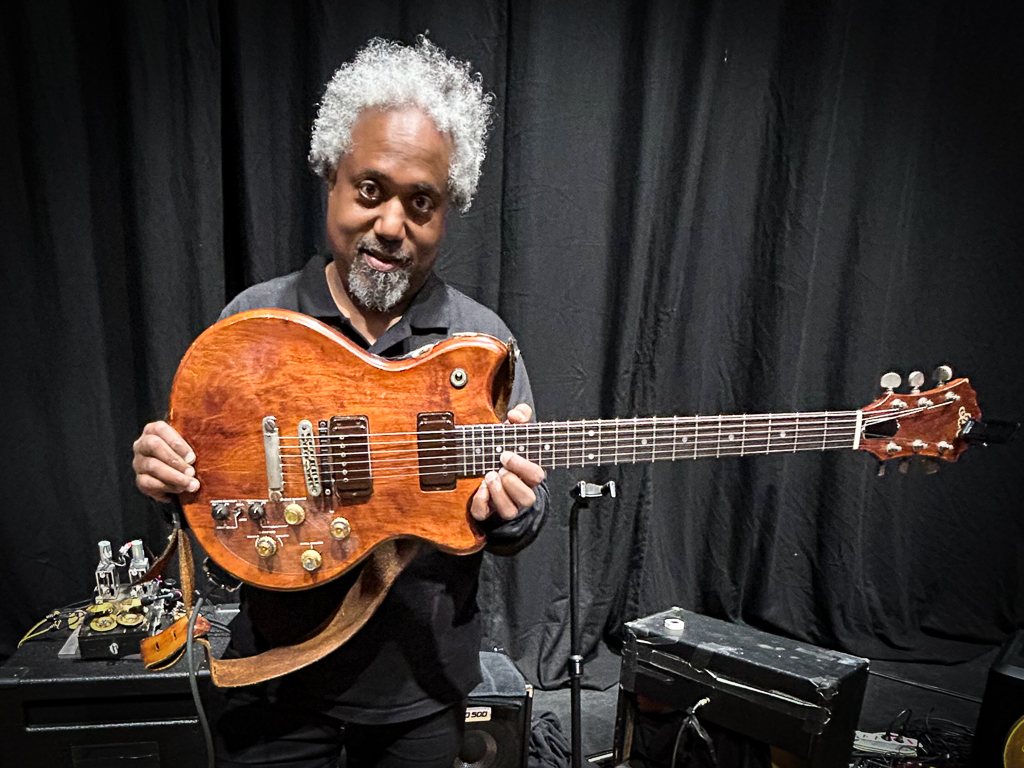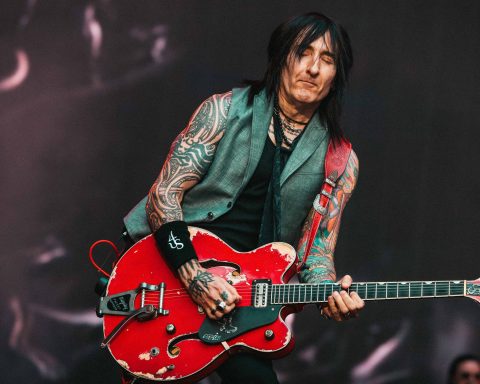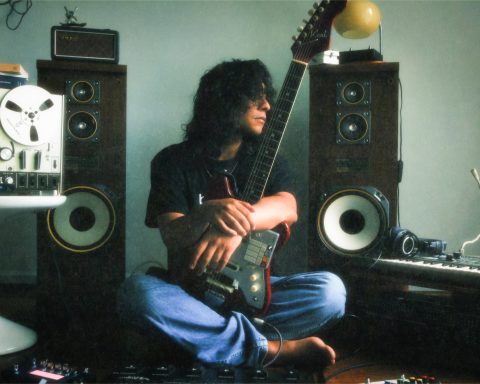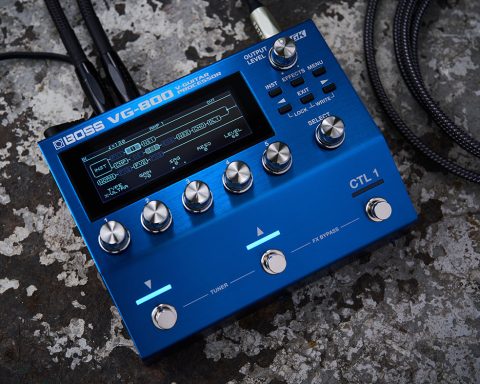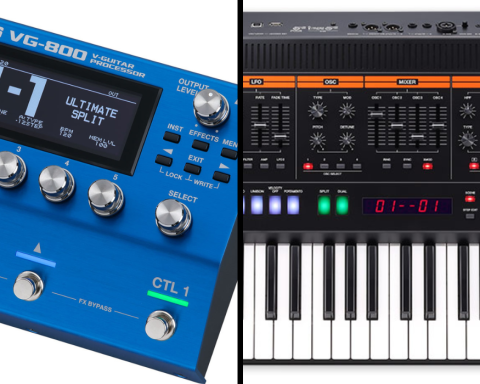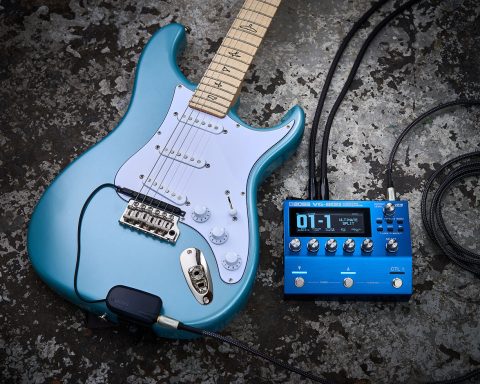Andre Cholmondeley is a trailblazing force in the world of V-Guitar and guitar synthesizers. With decades of expertise in Roland and BOSS technology, he has become a true virtuoso, excelling in both the creative and technical aspects of this revolutionary field. We had the privilege of catching up with the highly skilled guitar tech after the first of two sold-out nights at London’s iconic Barbican Hall on Pat Metheny’s mesmerizing MoonDial/Dream Box world tour. During our conversation, he shared valuable insights and advice drawn from his extraordinary musical journey and illustrious career.
From Passion to Profession
Cholmondeley’s impressive list of legendary clients also includes guitar icons like Adrian Belew, Al Di Meola, Steve Howe, Greg Lake, and David Torn. As a composer and performer, his innovative approach to both original music and covers has set him apart. In the 1990s, he formed a celebrated Frank Zappa tribute band that brought him into collaboration with numerous Zappa alumni. His passion for tribute performances also led him to join a dynamic David Bowie tribute group, where he recreated the late artist’s iconic album sounds using V-Guitar and guitar synthesizer technology.
Cholmondeley’s journey didn’t stop at playing; he quickly mastered the intricacies of touring, management, and guitar tech work. This led to his role as tour manager of The Grandmothers, a band featuring former members of Frank Zappa’s Mothers of Invention. His reputation grew, and he eventually became the trusted guitar tech of jazz fusion legend Al Di Meola. Throughout this, he continued to nurture his own creative projects, earning recognition alongside some of the greatest guitarists in music history.
Where did your musical career begin?
I started playing guitar at 18, which is a little late compared to some people. But five or six years later, I started playing live in groups. Fast forward to the ’90s, I formed a Zappa tribute group called Project/Object. I’m proud to say that the band brought a lot of the Zappa guys out of retirement: Napoleon Murphy Brock, Denny Walley, Ike Willis, Don Preston, Ray White, Ed Mann, and Tom Fowler.
I toured with over a dozen Zappa alumni playing guitar, and by doing that, I learned how to put together and manage tours. It was trial by fire. In the year 2000, I started helping out a few of the ex-Mothers of Invention guys in their band, The Grandmothers. I was so used to organizing my own band that I naturally started doing it in a professional capacity for other groups.
Zappa and Bowie Revisited
As a musician, how have you used V-Guitar and guitar synthesizers live?
I play in a David Bowie tribute band called Wham Bam Bowie Band and have also toured with Celebrating David Bowie as a tech and tour manager. I’ve used a Roland GR-55 Guitar Synthesizer and VG-99 V-Guitar System in my rig, along with a regular synth and MainStage. I could not only duplicate every guitar sound from the Bowie records that I needed to, but I could also play Mellotron patches, strings, sound effects, and all sorts of other things. The GR-55 was perfect for that because I got great 12-string and acoustic guitar modeling sounds, plus lots of different amp modeling. I used the MIDI out of the VG-99 to drive the synth, a Triton Rack.
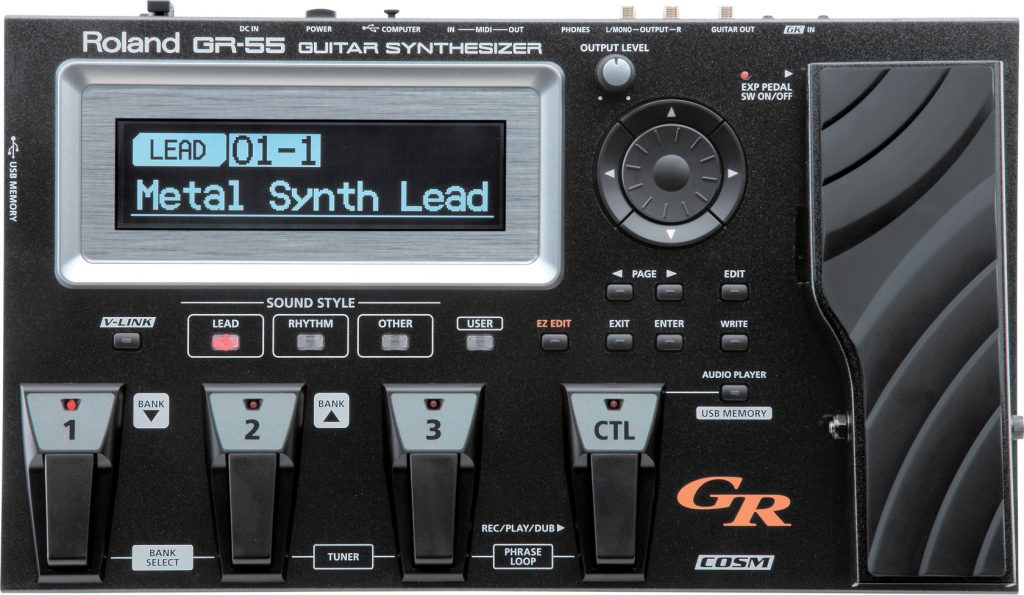
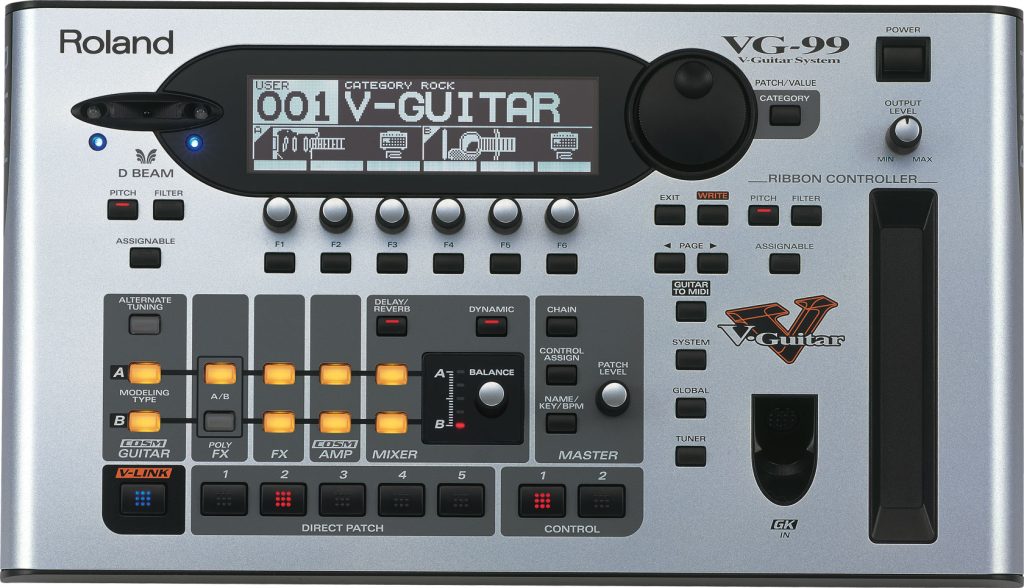
Replicating the sounds of Zappa and Bowie recordings must be a challenge.
Doing covers is a long tradition in modern music that dates back to jazz musicians in the 1950s. And I really love doing the Frank Zappa and David Bowie shows, partly because they are challenging. But it’s hugely rewarding as a musician. I’ve always done original music, too. It’s not commercial music; some people would say it’s very strange. But I’ve covered a lot of ground, and I’ve done everything from acoustic folk-pop and reggae to funk and heavy metal.
The Art of Sound
Also, for over 40 years, I’ve made electronic music. I started to make music using synthesizers and tape in 1983. I went to Rutgers University, where I took classes on musique concrète and tape splicing, too. That’s always been a thread throughout my musical career, but particularly in the last 10 years or so, I’ve concentrated a lot on making electronic music.
I have a project called We Are Ants to Them. Because I work and tour so much, being in a band is difficult, but I can make solo electronic music, with and without guitar gear, anywhere.
Do you use V-Guitar gear to record?
I’ve been able to incorporate V-Guitar into electronic music very successfully. I still use the VG-99, and it’s an important part of my setup. I think it’s one of the greatest landmark pieces of equipment that Roland has ever released. And I’m really happy that BOSS is carrying V-Guitar forward with the VG-800 V-Guitar Processor.
Learning From the Masters
What was your first professional guitar tech job?
In 2006, I started working for Al Di Meola. I was very fortunate to land that gig because, firstly, he’s a legend, and secondly, he’s a perfectionist. Al Di Meola’s standards are very high, and the year I spent traveling the world with him was incredibly demanding, but I learned a huge amount during that time.
After cutting your teeth with Al Di Meola, what was the next phase of your journey as a guitar tech?
I went from working with Al Di Meola to Adrian Belew. I first met Adrian as a fan in the ’80s. Years later, I played at the Zappanale festival in Germany and met him again there. I knew a few people in his band at the time. I told him, “I’m a tech now, and I manage bands on the road, so if you ever need someone, let me know,” and we exchanged numbers. Sadly, a few months later, his long-time tech passed away, and I got a call to just fill in for a week, but I’ve worked for Adrian Belew to this day.
How did working for Al Di Meola and Adrian Belew enhance your technical knowledge?
Working with Al Di Meola and Adrian Belew further enhanced my knowledge and love for Roland V-Guitar and guitar synthesizer gear. Al Di Meola was using the VG-88 V-Guitar System, so I had a crash course in V-Guitar working for him. That’s when I realized how incredible V-Guitar is. He used the VG-88 with a classical guitar.
Revelations in V-Guitar
Tell us about Adrian Belew’s approach to V-Guitar and guitar synthesizers.
Working with Adrian Belew was another thing, with his Parker Fly guitars. At that point, we were using one of the Roland GR-series guitar synthesizers, but I informed Adrian about the VG-99 V-Guitar System when that came out in 2007. He’d already owned a VG-8 V-Guitar System and a VG-88, which I liked. He said, “Those are really cool, but didn’t really do it for me.” But when he discovered the VG-99, he absolutely loved it. The VG-99 became huge for him.
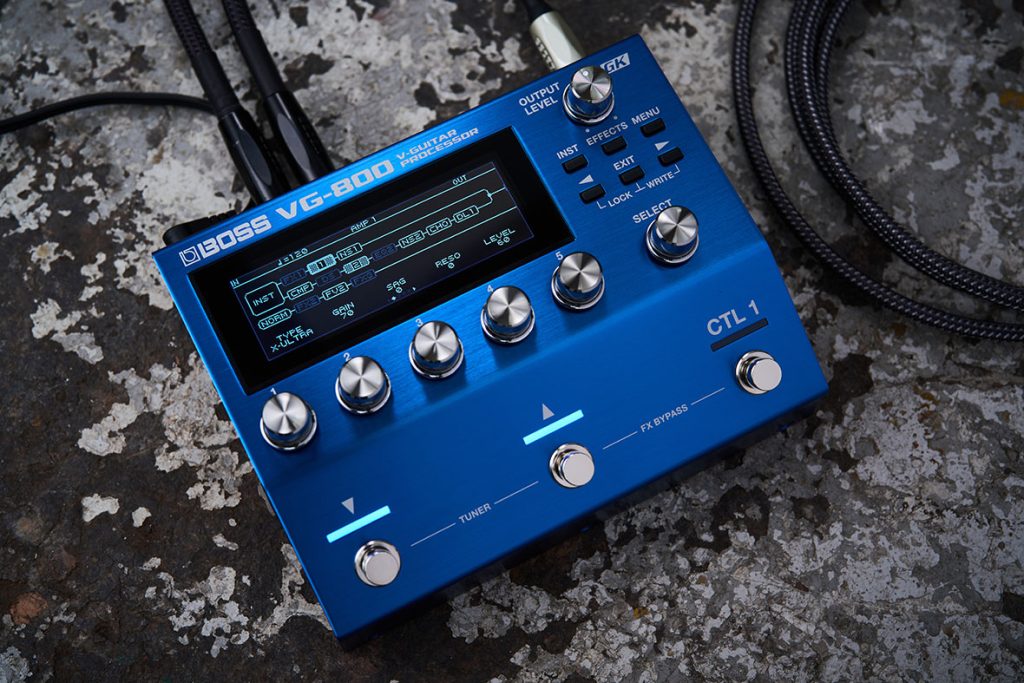
Does Adrian Belew still use the VG-99 V-Guitar System?
Adrian still likes the VG-99, but he moved over to the BOSS GP-10 Guitar Processor, which has similar functionality. He loves the pitch stuff as well as the modeling. It gave him access to alternate tuning. And when he used the VG-99 for pitch-to-MIDI conversion, the tracking proved exceptional.
How did V-Guitar impact Adrian Belew creatively?
There’s a masterwork album of Adrian Belew’s called e. He performed the whole thing live with the Metropole Orchestra in the Netherlands. The Metropole Orchestra tends to work with contemporary artists, and they’ve previously performed live with George Duke and Steve Vai. Their arranger, Tom Trapp, is a friend of mine, so I connected him with Adrian Belew, and they did e.
I remember Adrian was writing e on the road. It was a huge piece of work and came together over a few years. This incredible composition could not have been done without V-Guitar. There are sections of it where there’s regular guitar tuning, VG-99 alternate tuning, and sometimes a third layer where he would use further tunings and sounds. He wouldn’t have been able to do that with previously existing gear. Those guitar parts came about because of the VG-99.
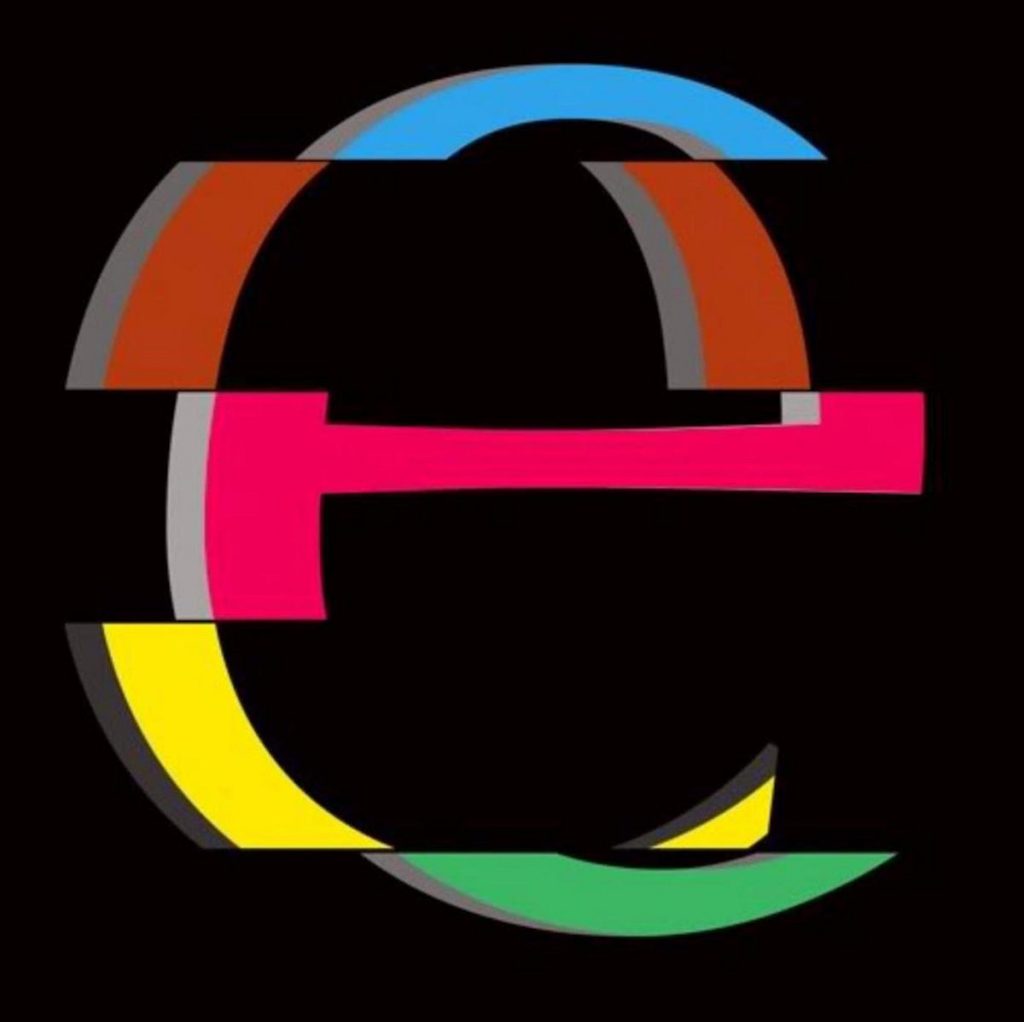
Also, looping was an important part of creating e. He was able to loop and layer these alternate-tuned guitar parts, resulting in huge, orchestral-sounding pieces of music.
On the BEAT
Adrian Belew and Steve Vai used BOSS Guitar Synthesizers for the recent BEAT tour.
I was helping Adrian Belew pick some gear out for the BEAT tour and we were looking at the BOSS SY-1000 and GM-800 Guitar Synthesizers. That’s where we started because he wanted to get his classic Roland GR-300 King Crimson tones, and those units feature GR-300 sounds.
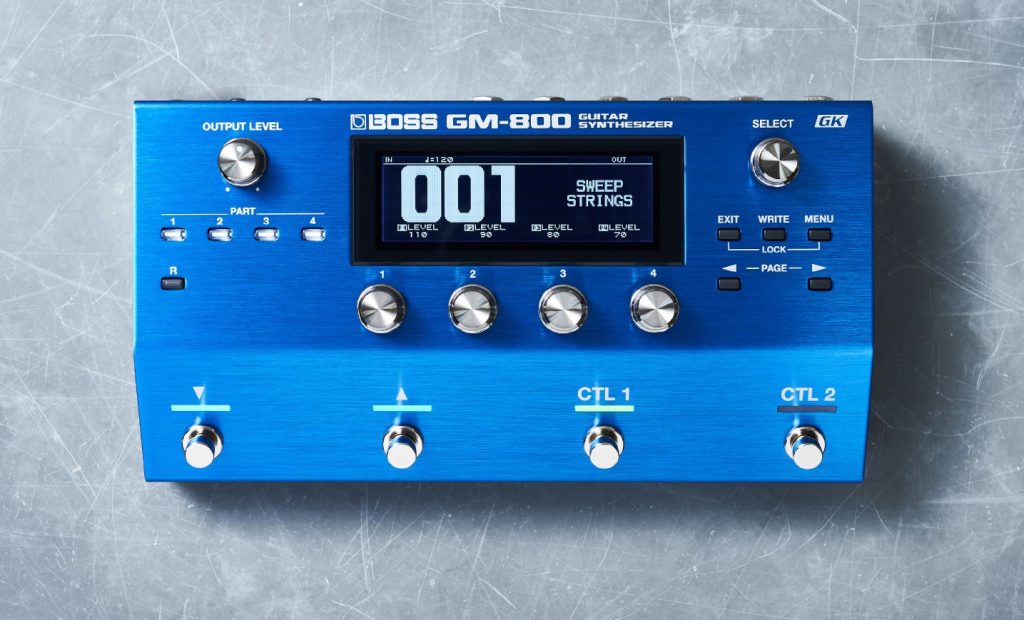
I have a GK-Ready Stratocaster factory-fitted with the older 13-pin analog GK-3 pickup, and I use that with the BOSS GM-800 Guitar Synthesizer. I know the GM-800 takes the new digital GK-5 Divided Pickup, but I use the BOSS GKC-AD analog-to-digital converter, and it all works great together. I love how compact and portable the GM-800 is, and it’s very powerful in terms of programming and flexibility. Adrian actually preferred the SY-1000, but ultimately, he took his old GR-300 from the early ’80s out on tour with him.
Adrian Belew is also a big fan of the Roland JC-120 Jazz Chorus amp.
I’ve owned a couple of JC-120s myself over the years, and nothing sounds like that amp. When he was putting together the rig for the BEAT tour, Adrian tried several different other amplifiers, but in the end, he said, “I’m going to dig a couple of JC-120s out of storage because it’s the only amp that does these King Crimson sounds.” That chorus sound is so unique. The JC-120 design is unbeatable.
Are you familiar with any BOSS amps?
I’ve got one of the BOSS Cube amps, and that’s also brilliant. Pat Metheny uses the wireless Katana-Air amp backstage and on the road. He uses that every day. He loves it.
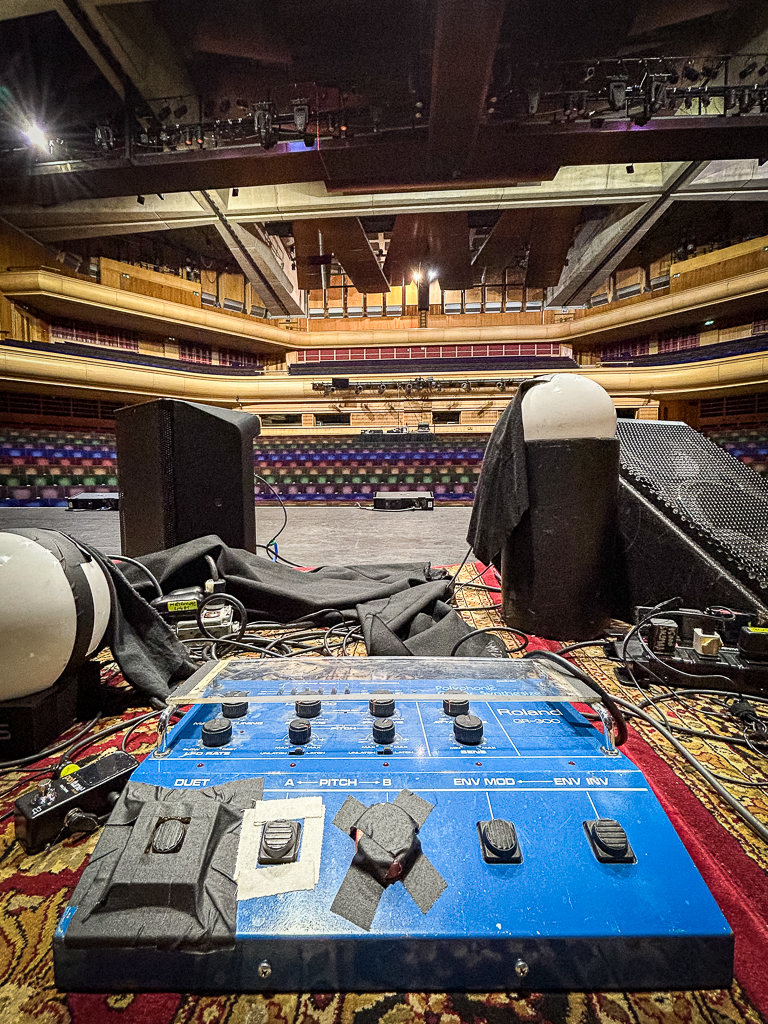
Musical Movements
When did you start working with Pat Metheny?
I worked with Yes up until the pandemic, and in 2021, I got hired by Pat Metheny. I’m very grateful and honored to have worked with some of the people who are not just my favorites but also the architects of art rock, jazz, fusion, blues, and prog rock.
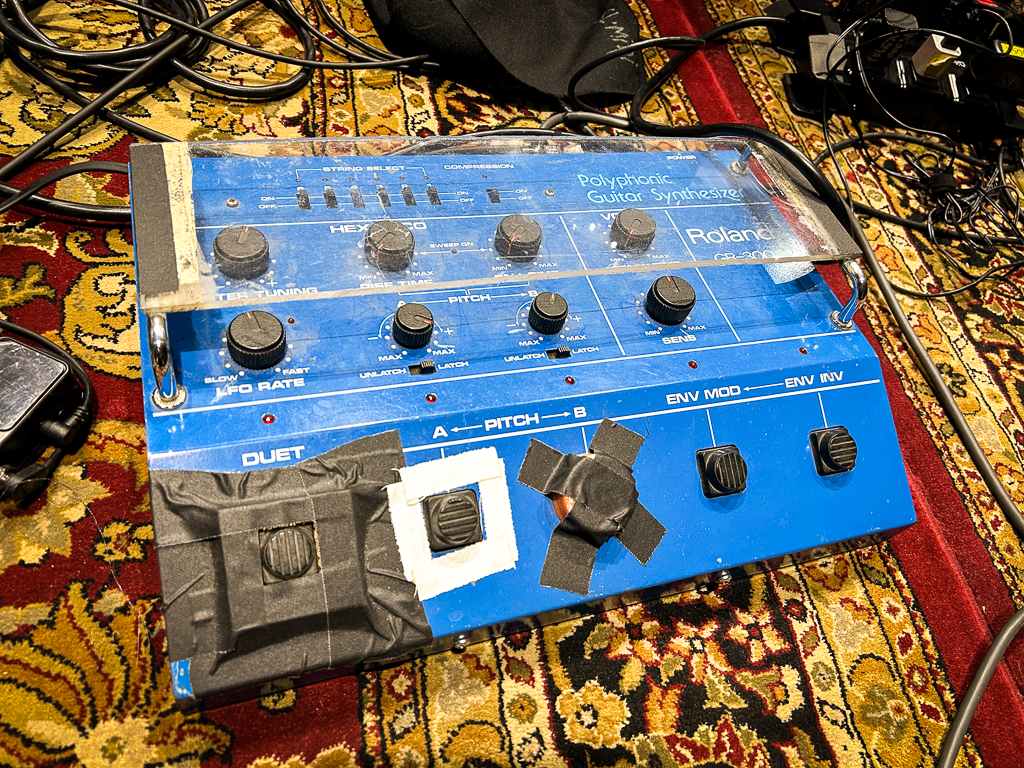
Tell us about your tech work with Steve Howe.
I became involved with Emerson, Lake & Palmer and did their final show in London in 2010. I met some people there who worked with Yes, so the following year, I got a call because they needed a tech. A lot of tech work comes about like this through word-of-mouth. When people ask me how to get into tech work, I tell them to show up on time, be sober, over-deliver, and be known as the person who will go the extra mile to get the job done.
Steve Howe had a hex pickup-equipped Les Paul and owned the BOSS GS-10 Guitar Effects System with USB Audio Interface. He loved the GS-10, and I think he may still use it sometimes. Steve was a big influence in the world of guitar synthesizers; the GTR album he did with Steve Hackett is all about that. That’s a groundbreaking record that was made with Roland guitar synthesizers.
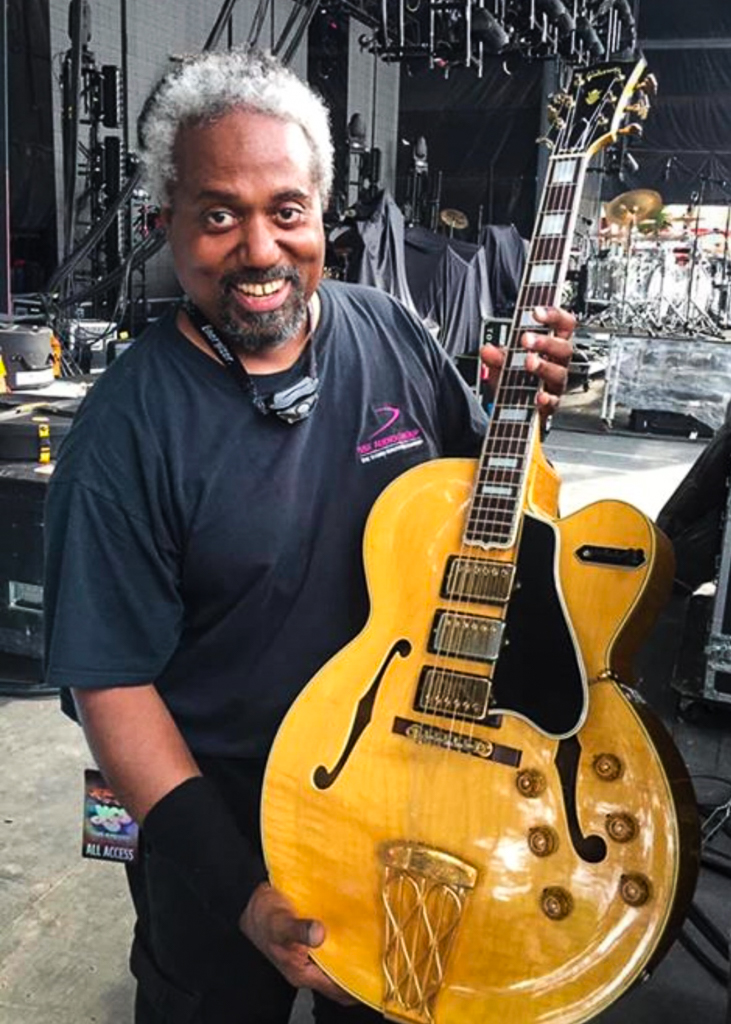
Guitar Legacies
In what ways have the guitarists you’ve worked with inspired or influenced younger players?
Several of the guitarists I’ve had the good fortune to work with have helped launch entire musical movements and had profound effects on guitar technique. I love that there are so many great guitarists around nowadays whom these people have influenced. In terms of modern bands, you only have to look at groups like The Mars Volta, Bent Knee, and Black Midi to hear the influence. To me, Black Midi sound like King Crimson and Radiohead trying to cover XTC.
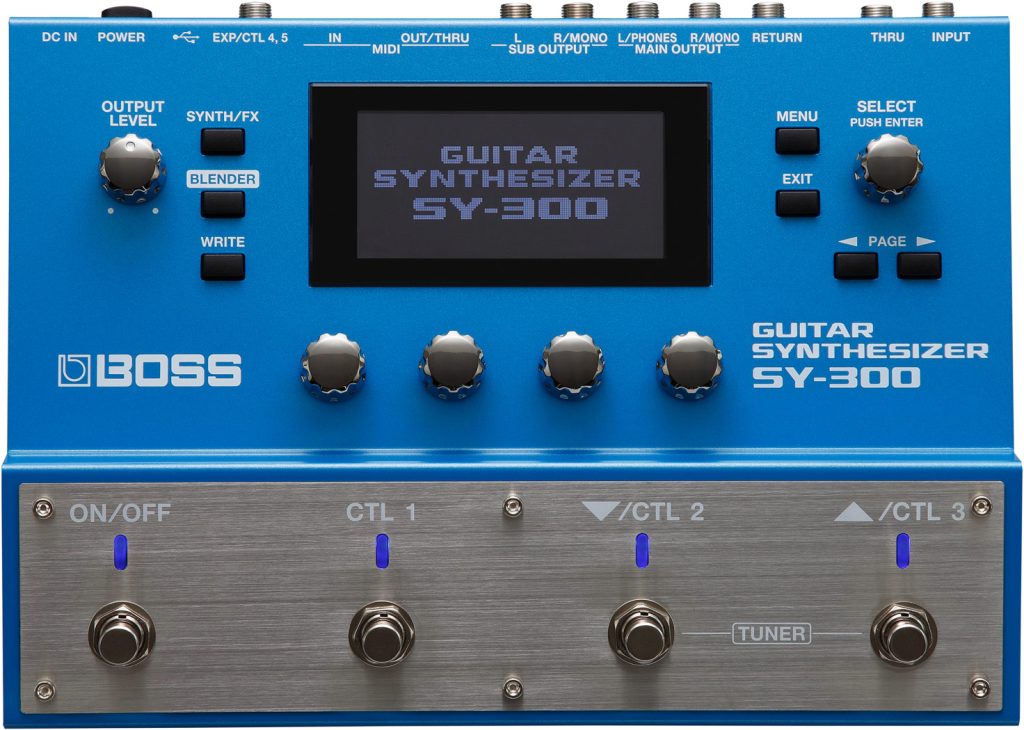
On the heavier side, you can also hear a lot of prog-rock influence in bands like System of a Down and Mastodon. You can hear Rush and Yes in both those bands. Guitarists like Zappa, Belew, and Howe influenced a huge chunk of modern music, and I see more and more guitarists using V-Guitar and guitar synthesizers. One of my favorite bands, a Japanese duo called Melt-Banana, uses the BOSS SY-300 Guitar Synthesizer.
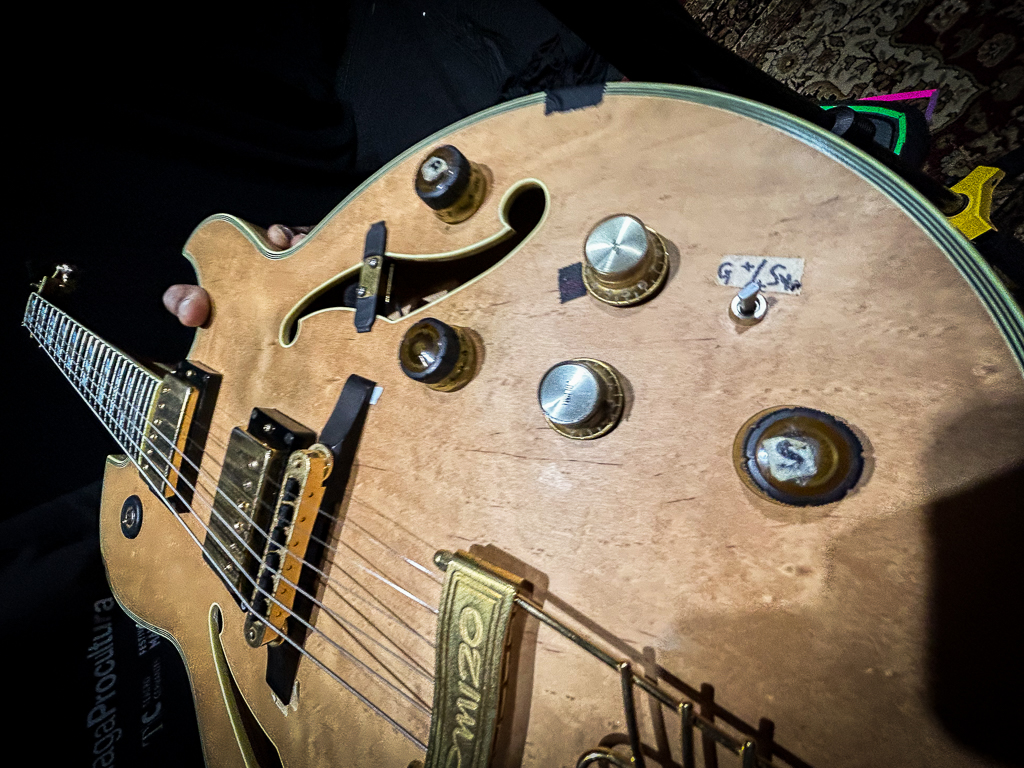
Desert Island Guitar Synths
Many guitarists consider the BOSS SY-300 Guitar Synthesizer a favorite. What do you think makes it so popular among players?
The BOSS SY-300 Guitar Synthesizer is an incredible unit. That’s one of my Desert Island units. That’s one I’ve suggested people check out if they’re new to guitar synthesizers. I’ve lent it to people who don’t like the idea of installing a GK pickup because you just use a regular guitar pickup with the SY-300. It tracks really well.
There are also the SY-1 and SY-200 Synthesizer pedals. Those are even simpler and also take a regular guitar pickup signal. But the SY-300 is fantastic. It’s kind of like a classic synthesizer. It has three oscillators, filtering, VCA, and envelopes, so the SY-300 teaches you really good basic synthesis. And you don’t have to alter your guitar to be able to use it.
Do you have any other Desert Island units?
The Roland GR-55 Guitar Synthesizer is one of the greatest. It’s got fantastic guitar modeling sounds, including incredible amp sims and all the effects you could wish for. But it’s also got really cool programmable synthesis and PCM samples. You can make sounds from scratch, but you also have a ton of essential samples, like strings, pianos, and old synths. I’m real excited to have heard the new BOSS VG-800 V-Guitar Processor at NAMM, and imagine where that generation of BOSS V-Guitar will go now.
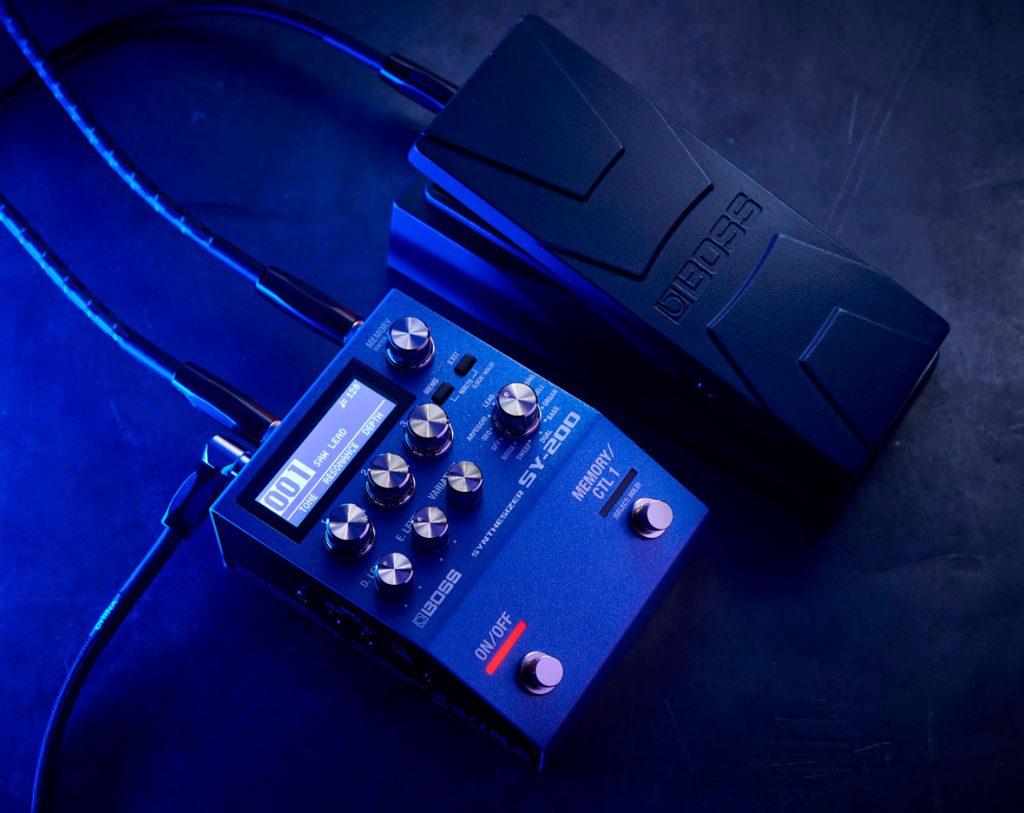
Dedication’s What You Need
What are some of the main challenges associated with V-Guitar and guitar synthesizers, and how can they be overcome?
Firstly, you really need to dedicate an instrument with a Divided Pickup. There’s often a split among guitarists. Some will do whatever it takes to realize their vision. This can be a hurdle for others. But it’s worth dedicating at least one guitar if you want to explore the world of V-Guitar and guitar synthesizers.
Guitarists, by nature, often want very simple solutions. But you really need to dial GK Divided Pickups in to get good results. You can’t just stick them on, plug in, and play. Once the pickup is installed, you need to be patient and set it up properly, making sure to check the height, intonation, and sensitivity of each string. You can experiment with string gauges; I’ve often found that heavy-gauge strings work better.
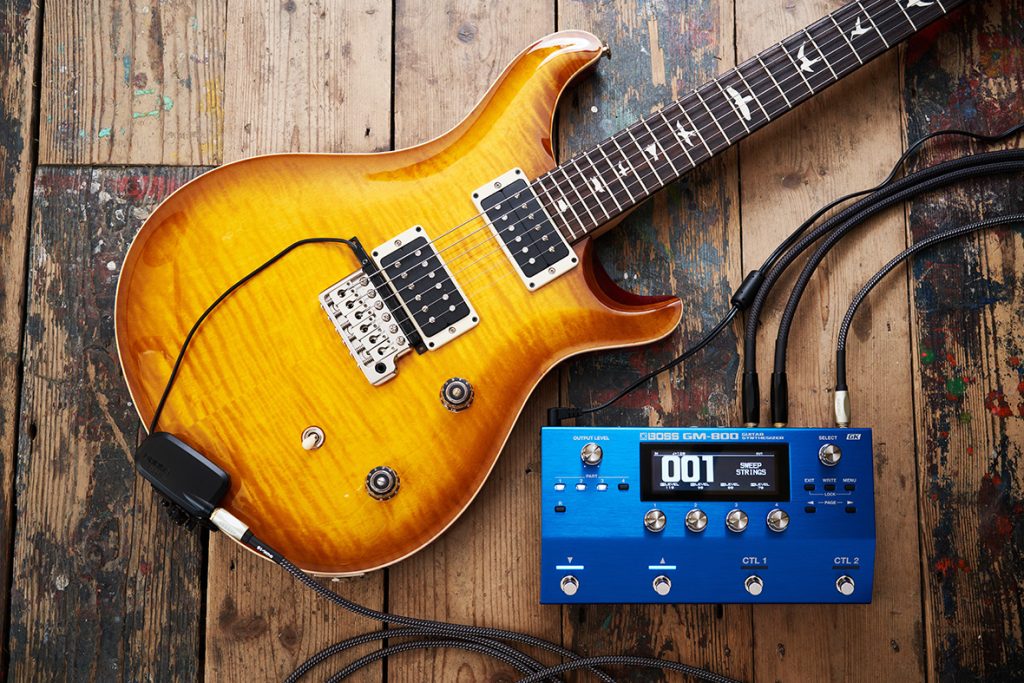
Previously, I’ve been able to get good results by just attaching GK-2A and GK-3 Divided Pickups using the included double-sided adhesive, so there are no permanent alterations to the guitars. I also own an old GK-Ready Stratocaster. Over the years, I’ve worked with every combination, but I really like using a Strat with GK pickups. That guitar design seems to work particularly well. The action and stability of the neck are important, and I really like the results I get with Strats.
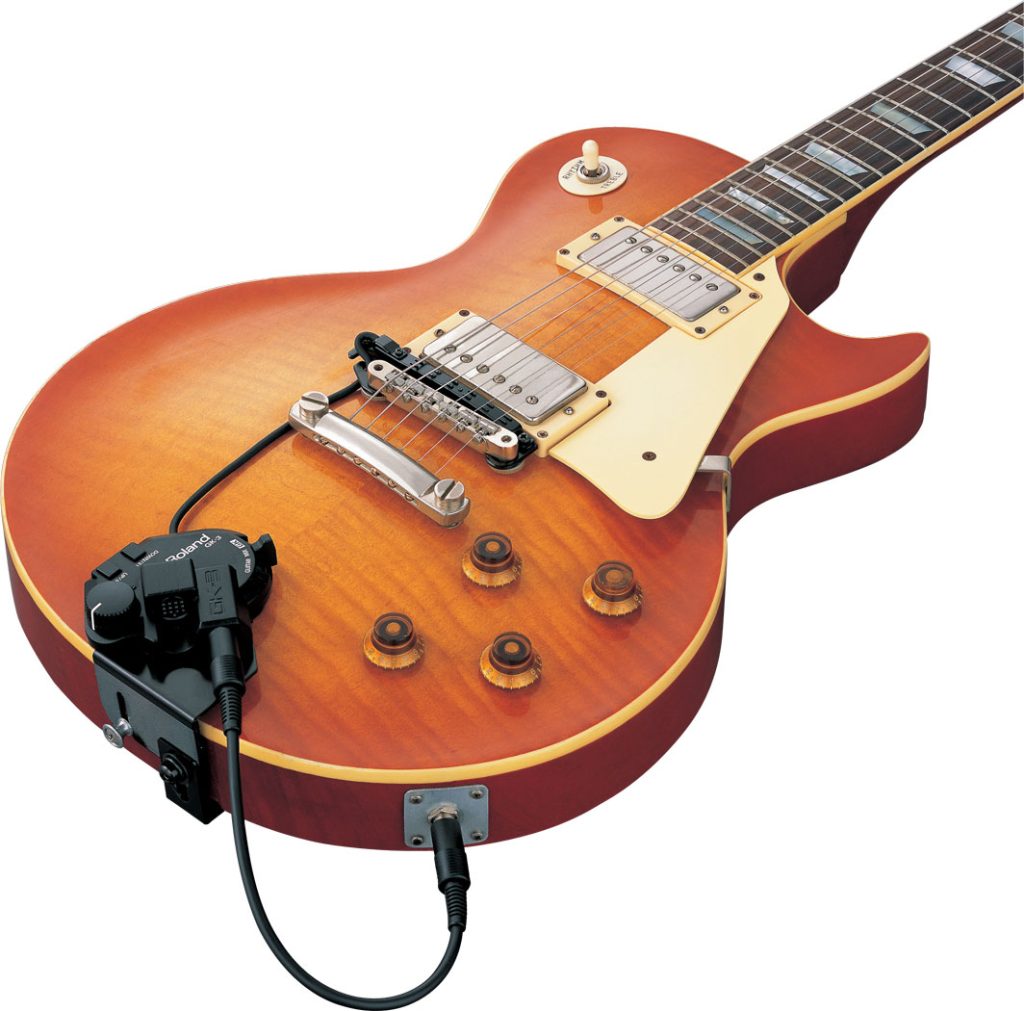
One of the best setups I’ve worked with was the GK-Ready Stratocaster into a Roland VG-99 V-Guitar System. The VG-99 MIDI Out is fantastic. I’ve also used the guitar with the Roland GI-10 Guitar MIDI Interface and GI-20 GK-MIDI Interface, and the tracking is superb.
Divided and Conquered
What do you believe are some of the most common misconceptions about GK Divided Pickups?
Some people mistakenly think the GK Divided Pickups are digital MIDI pickups. They are not. Any MIDI conversion takes place in the device it’s plugged into. The new GK-5 pickup is digital, and the older ones, like the GK-3, are analog, but none of them are MIDI pickups. That’s important to know because I think MIDI scares off some guitarists, and that’s not what this stuff is all about.
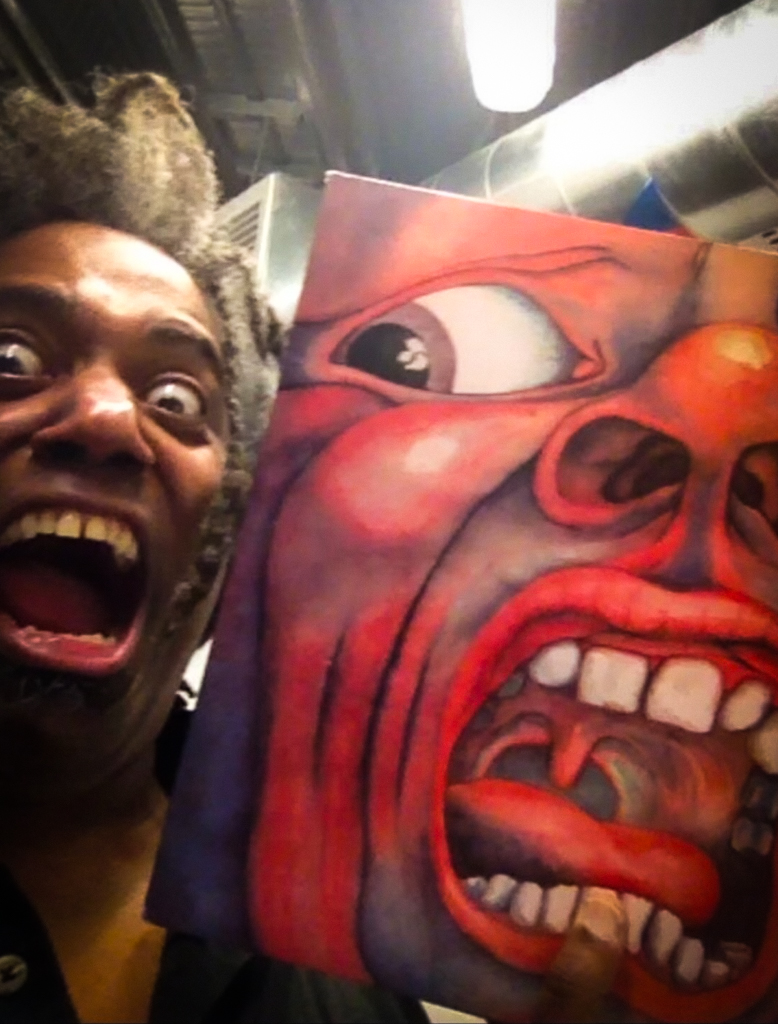
Are there any aspects of V-Guitar that you think are commonly underappreciated?
The regular instrument modeling people can use for all sorts of stuff from metal to acoustic guitar is incredible. For example, you can simply and easily model a Les Paul going into a Marshall using V-Guitar, and it sounds stunning!
How would you explain the unique advantages of V-Guitar, particularly for those who might be intimidated by the technology?
V-Guitar is one of the most innovative things from Roland and BOSS. And if people are somehow intimidated by guitar synthesizers or don’t know how to approach them, I tell them to take a look at V-Guitar because it uses the actual string signals. In other words, it’s not converting your playing into something else like MIDI and then triggering a sample from that. V-Guitar processes your signal in real-time using DSP technology, and there’s no latency.
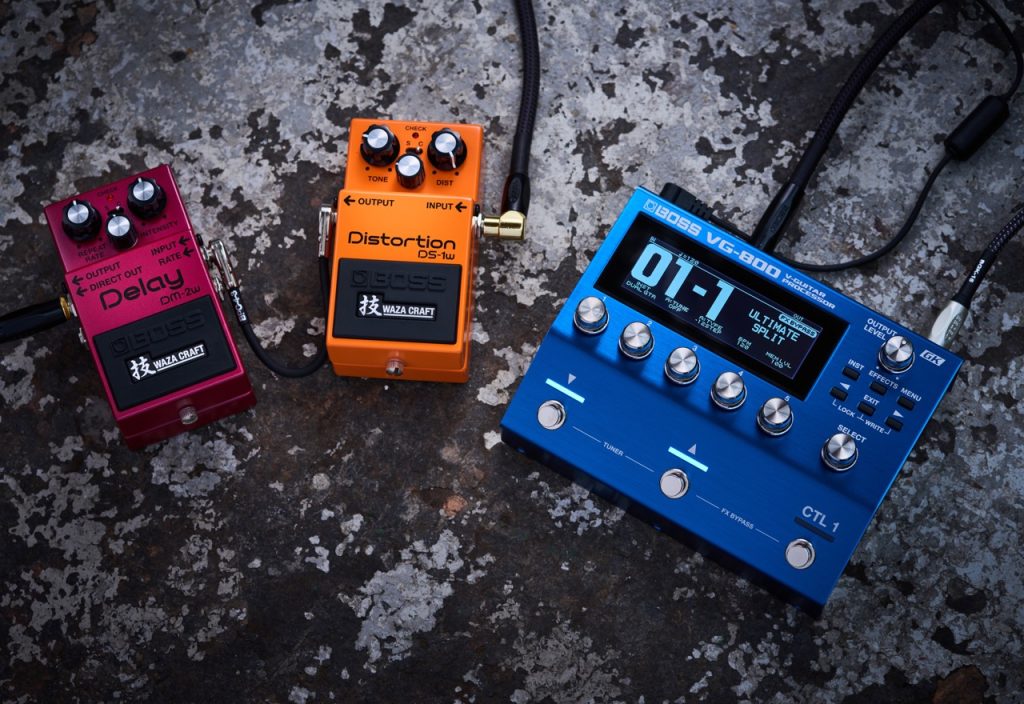
What’s beautiful about V-Guitar is that you have six separate signals (one per string), and those get processed independently. Your natural playing techniques come through without any lag because you’re dealing with string signals, as opposed to using those string signals to trigger samples or a synthesizer, after being pitch-analyzed then converted to MIDI.
You can get different instrument voices like acoustic guitars, banjos, and basses using V-Guitar, but it’s also fantastic for independently altering each string’s pitch. You can instantly switch to all sorts of tuning variations, like drop C and drop D, without it sounding or feeling strange.
First Steps
How would you recommend a beginner approach guitar synthesizers?
If I were a complete beginner, I’d be tempted to start off with the BOSS SY-1 Synthesizer compact pedal. It’s great! You don’t need a GK pickup to use it; you can use a regular guitar pickup and get going right away. You can quickly learn some of the sounds and what they do. I think that’s a great starting point.
After that, something like the BOSS SY-300 Guitar Synthesizer would be ideal because then you’ll go deeper and learn more about synthesis. Spending time with that and reading the manual will teach you the essentials of synthesizers. And that’s hugely important. Because then you can pretty much understand how any classic synthesizer works. It’s a powerful box.
Which V-Guitar products would you recommend to a beginner?
The BOSS GP-10—the one Joni Mitchell used recently—is a good start. It has fantastic modeling and alternate tuning capabilities. Of course, the new VG-800 V-Guitar Processor is the way forward now.
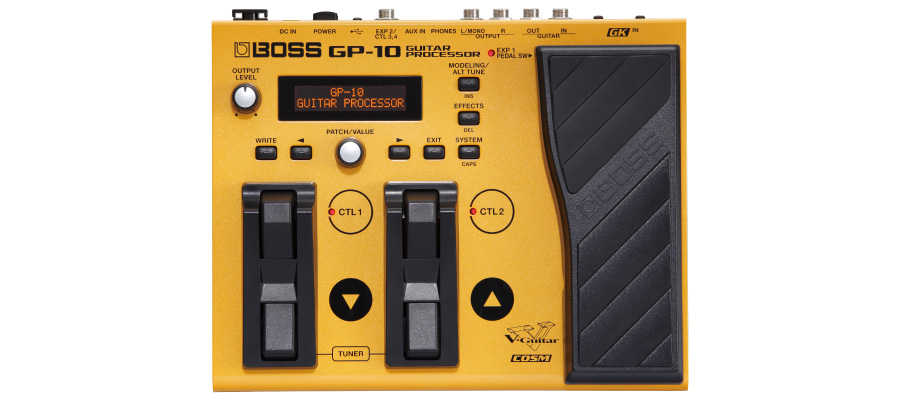
Joni Mitchell
Joni Mitchell used a BOSS GP-10 at the 2022 Newport Folk Festival.
Indirectly, through a friend, I helped her choose the BOSS GP-10 she used for her comeback at the 2022 Newport Folk Festival. She’s been playing shows since, too. Pictures of her pedalboard are online, and you can clearly see the GP-10.
I’m proud to say a friend of a friend called and asked me, “If you were someone who used the VG-8 years ago, what would you use today?” I said, “Do they need synthesis?” They told me, “They just need to be able to switch into different tunings easily.” So, I told them about the BOSS GP-10. The GP-10 is clearly suitable for pro players, but it’s also a good entry-level unit. You can use it without a Divided Pickup (it’s got a regular guitar pickup input), but that will limit what you can do with it.
Joni Mitchell was a pioneer of V-Guitar from the beginning.
One of the highest compliments V-Guitar has gotten was when Joni Mitchell started using it in the ’90s. Her work is incredible. I’ve learned a few of her songs with different tunings. As an experiment, I put a couple of her tunings into the GR-55, and it’s brilliant. There are no digital artifacts or problems with pitching at all. It just sounds really natural.
30 years ago, Joni stopped touring, partly because it was so frustrating having to take a truckload of guitars with her to handle all the different tunings she used. But in the mid-’90s, somebody turned her on to the Roland VG-8 V-Guitar System—the very first V-Guitar processor. She loved it because it meant she could just play her amazing music using a Strat-style guitar or the Western Red Cedar Fly that Ken Parker made her. That’s how powerful V-Guitar is—it can literally transform your guitar-playing career.

